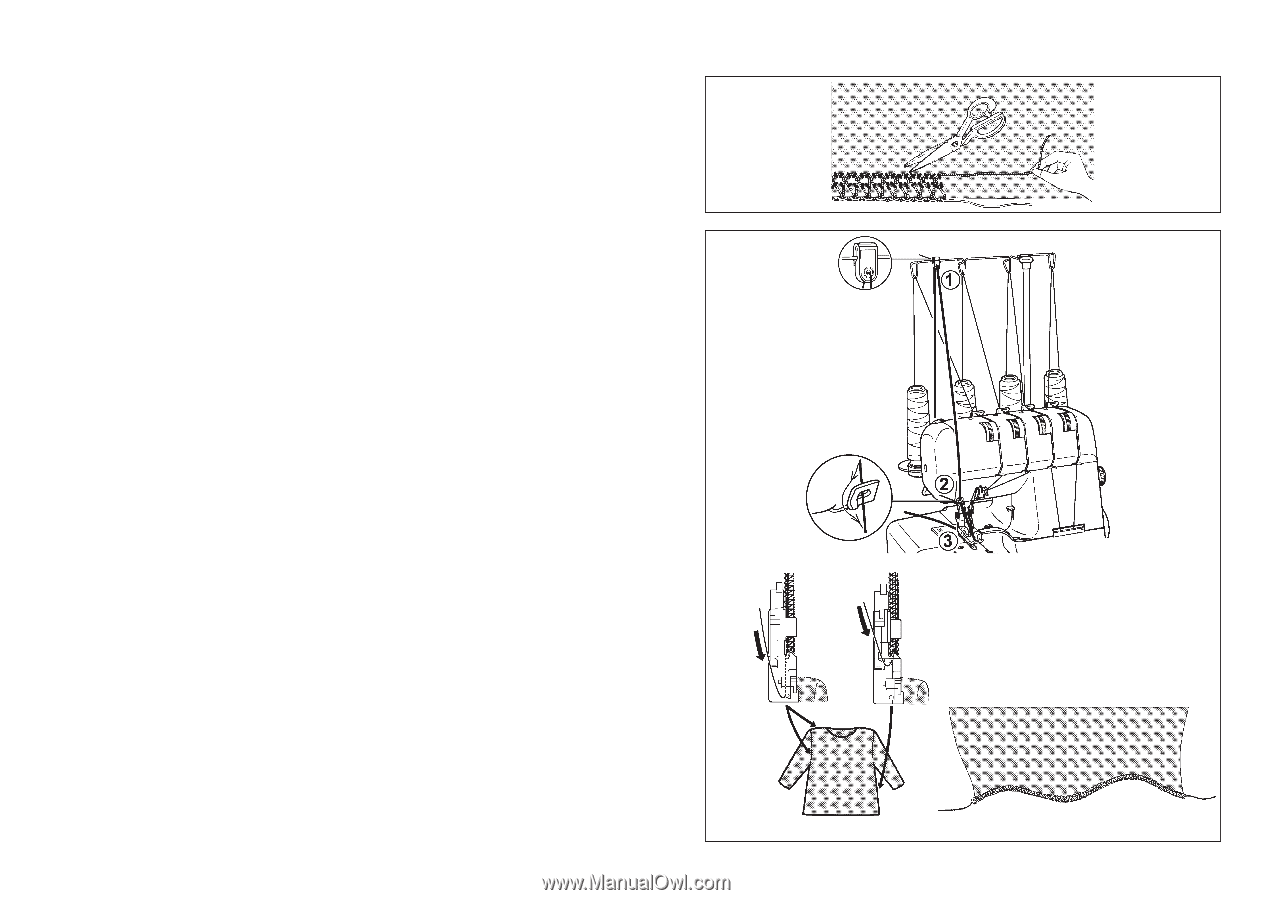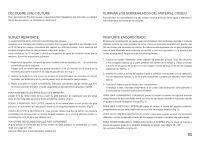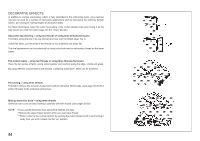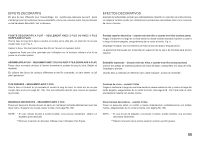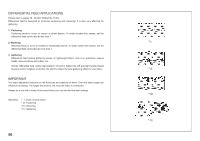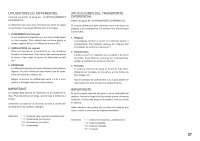Singer 14J250 Stylist II Serger Instruction Manual - Page 53
Removing Stitches From Sewn Fabric
 |
View all Singer 14J250 Stylist II Serger manuals
Add to My Manuals
Save this manual to your list of manuals |
Page 53 highlights
REMOVING STITCHES FROM SEWN FABRIC To remove stitches already sewn, snip off needle thread(s) at intervals and pull out looper thread(s). CORDED OVERLOCK Corded overlock can be used to strengthen shoulder, sleeve or side seams when making knitted garments. As a decorative feature, you can use knitting yarn of contrasting colors to further enhance your garment. Your machine is equipped with a presser foot which has been designed to feed cord or yarn to the left or right of the stitch. Follow directions as follows: 1. Place a "filler" cord, such as a crochet cotton, gimp, wool, knitting yarn, or shirring elastic at the rear of the machine spool pin. Pass the cord through the cord guides (1) and (2) and then through the left needle thread guide (3). See Fig. 1. 2. Insert the cord through either the front or rear hole on the presser foot. Pass it under and to the rear of the foot. 3. Place the fabric under the presser foot as usual. Start at a slow speed, making sure the cord is feeding correctly. Increase speed as needed. FOR JOINING SHOULDERS OR SLEEVES, pass the cord through the front hole in the presser foot. Be sure the cord is between the left and right needle threads as it is guided through the front hole. (Fig. 2) FOR JOINING SIDE SEAMS, pass the cord through the rear hole in the presser foot. Be sure it is positioned under the right needle thread. (Fig. 3) FOR DECORATIVE EFFECTS, pass contrasting color cords through either the front or rear hole in the presser foot, or pass cord through both holes. FOR MAKING WAVY EDGES OR HEMS, (Fig. 4) pass heavy monofilament thread through the rear hole in the presser foot and use a Rolled Hem. (See pages 38-39). Fig. 2 52 Fig. 3 Fig. 4
